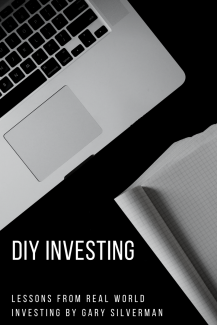
A Quiz to Recap DIY Investing
By Gary Silverman, CFP®
Last week I told you we’d have a quiz. This quiz is to summarize the do-it-yourself investment plan I’ve been outlining for a while in this column.
Question: You want a portfolio that grows, will provide income in retirement, is diversified across a myriad of investments, and will adjust as your ability to absorb risk gets smaller. What do you use?
Answer: A Target-Date fund.
You can choose one with the date that’s closest to your retirement date or choose a date 5-10 years earlier if you tend to be squeamish when it comes to the market. Or choose 5-10 years later if you laugh at crashes and corrections.
Question: If you are nearing or are in retirement, what can you do to minimize the possibility of drawing money from your Target-Date fund to live on when the market is down?
Answer: Have a cash flow buffer. This is a stash of cash (probably a savings account) that you can draw from instead of the Target-Date fund when it is down in value.
Question: When do I create the cash-flow buffer?
Answer: You’ll want to start building the buffer a few years before you retire.
This is the core of the DIY strategy. Your entire retirement investment portfolio before, transitioning to, and through retirement is taken care of using a Target-Date fund and a buffer account. But there is a transition from the zero-buffer days of your youth and when you finally get yourself retired.
First, I’ll mention a short-cut you can take in building your buffer. If you’re the type of reader who does everything I recommend, then you have an emergency fund. Part of that was to have money available in case you lost your job. The closer you get to retirement, the less you need that part of it since, well, you won’t have a job to lose soon. That money can be repurposed from your emergency fund to your cash-flow buffer.
Question: What happens if the market is down a long time and the buffer is emptied?
Answer: You’ll just have to start taking money from the Target-Date fund even though it is still down. It happens. The more buffer you have the less it will happen, but the less overall growth you’ll have with that extra money in cash.
And then, whether emptied or not, the buffer needs to be filled again. Do this once the market fully recovers to where it was before you started using the buffer to cover your spending needs.
Question: What if I want a more complicated option? I want to be like you and use dozens of funds, rebalancing across them. I can think of no better way to spend my days now and when I’m retired than by tinkering (wisely, of course) with my investment portfolio.
Answer: If you insist, come back next week and I’ll tell you how to start on that path.
Gary Silverman, CFP® is the founder of Personal Money Planning, LLC, a Wichita Falls retirement planning and investment management firm and author of Real World Investing

